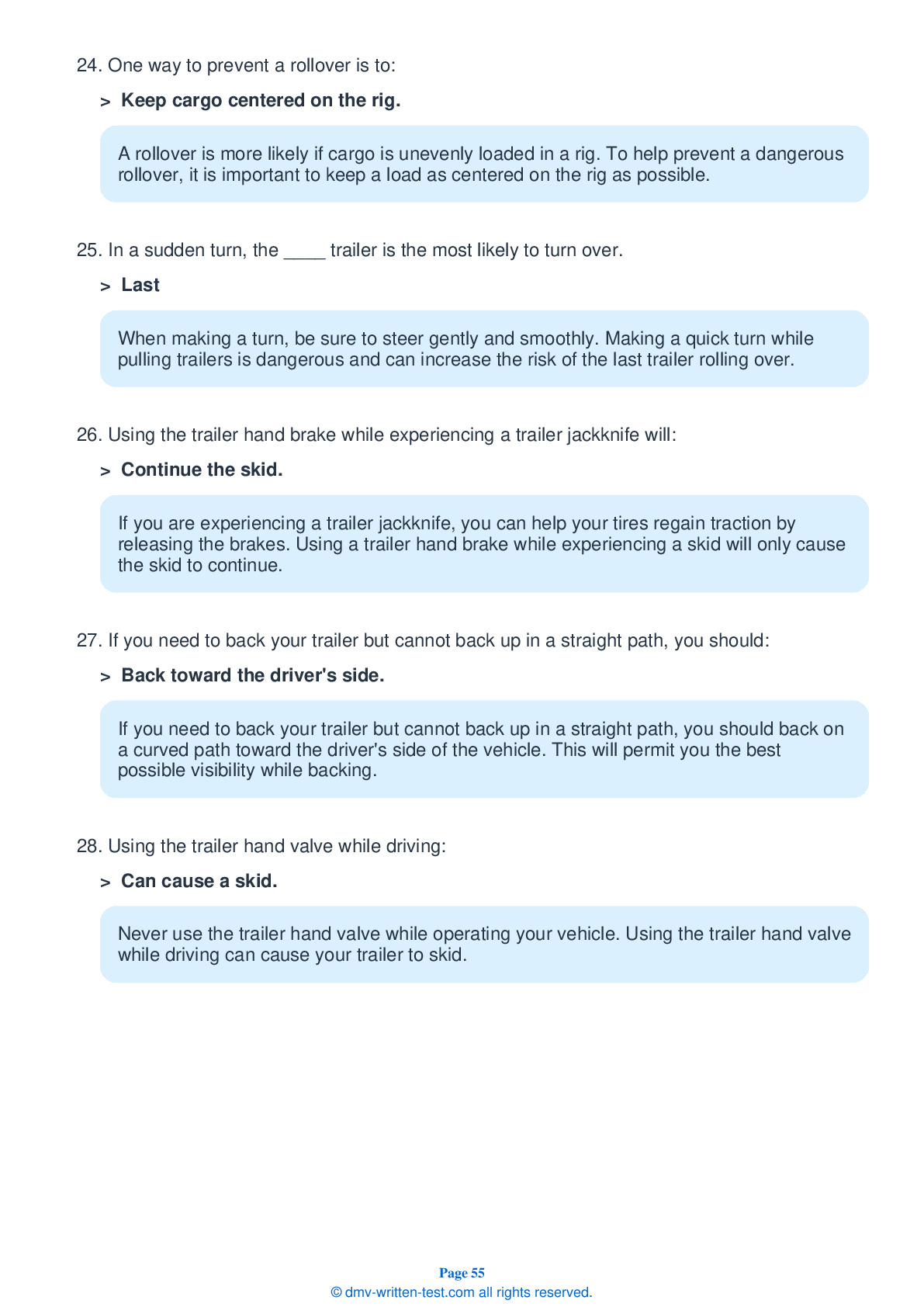Air Brakes
This endorsement is required for driving a vehicle with air brakes. To receive this endorsement, applicants must pass a written test. The test consists of 25 multiple choice questions. Each question has three answer choices. To pass, the applicant must answer at least 20 questions correctly. Test questions come from the Louisiana Commercial Driver License Manual. Questions come from the chapter covering: Air Brakes. The Air Brakes endorsement may be used with the Class A, B or C CDL.
Number of Question
Passing Score
13. When leaving your vehicle unattended:
Explanation
Always apply the parking brake when leaving your vehicle unattended.
14. A slack adjuster should move no more than ____ from where it is attached to the push rod.
Explanation
Before a trip, you should check each slack adjuster after parking, setting wheel chocks, and disengaging the parking brake. Pull the slack adjusters to make sure that they do not move more than about one inch from where the push rod is attached. If they move more than one inch, they may be out of adjustment and will need to be fixed.
15. What is often found in compressed air?
Explanation
Compressed air in an air brake system usually contains a certain amount of water and compressor oil. The water and oil can damage the brakes if left to accumulate in the system. Tanks must be drained regularly to remove this build-up.
16. Why should you regularly drain the air tanks?
Explanation
Compressed air usually contains a certain amount of moisture and compressor oil, which can build up in the air storage tanks and damage the brake system. The tanks should be drained to clean out these accumulations. On a tank with a manual drain valve, draining should be performed at the end of each day of driving.
17. While driving, ____ generally holds spring brakes in place.
Explanation
While driving, spring brakes are generally held in place by air pressure. If the air pressure gets low enough, the springs will activate the brakes.
18. The ____ between an air compressor and reservoir tank prevents air from escaping if the air compressor has a leak.
Explanation




